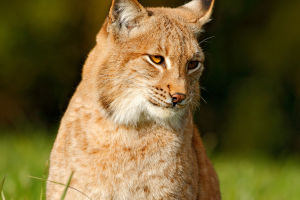The swan is a majestic bird known for its large size and graceful movements. It measures approximately 1.5 meters in length and weighs over 10 kg.
The swan's feathers are entirely white, and its beak is mostly black, with a yellow upper beak extending to the nostrils. Its head and neck are relatively long and account for almost half of its body length.
Swans are winter migratory birds that mainly feed on seeds, roots, leaves, and seeds of aquatic plants. They typically inhabit lakes, reservoirs, and ponds with many reeds.
Mute swans are highly adaptable birds that can survive in various environments, regardless of whether it is hot in the south or cold in the north. They do not need to build a shed and can sleep on the grass or float on the water for an extended period.
Swans do not have a fixed home, except during the breeding period, where they often choose a safe area on the lake, bending their necks and resting their heads in their wings with the water drift. White swans prefer to nest in clusters and have fixed mates, practicing monogamy.
There are four kinds of white swans distributed in the northern hemisphere, known for their white plumage, beautiful body, beautiful call, and loyal behavior. In both Eastern and Western cultures, the white swan is a symbol of purity, loyalty, and nobility.
Japan is one of the wintering places for swans, and there are more than 20 ancient names for swans in Japanese. Some of these names are imported from China, some are the names of the areas where swans live, some are onomatopoeic words for the swans' calls, and some are descriptions of the swans' forms.
Swans are considered to be the messengers of heaven and "sacred birds" in Japanese culture.
In ancient Greece, Aristotle's "Animalia" discussed the habits and behavior of swans, as well as the anatomy of swans. The book "Greek Bird Book" has a moving description of the swan's deathbed song, and in Western culture, the literati's deathbed song is called "swan song" from this.
Swans reach sexual maturity in 3-4 years and breed once a year. Their eggs are larger, and they are young and become early adult chicks.
The courtship behavior of swans is rich, with both male and female birds tending to make the same actions and being considerate of each other while combing their feathers.
Breeding periods for swans are mainly in open lakes, ponds, marshes, slow-moving rivers, and adjacent tundra lowlands and tundra swamps.
During winter, they mainly inhabit large lakes, reservoirs, ponds, and river bays with many reeds, cattails, and other aquatic plants. Swans may also appear in wet meadows and flooded plains, marshes, beaches, and estuaries, and sometimes in farmland wilderness.
Swans are magnificent birds known for their beauty, grace, and loyalty. They have played an essential role in various cultures worldwide and continue to capture the hearts and minds of people everywhere.
Their adaptability and resilience make them remarkable species that will continue to thrive in different environments.


